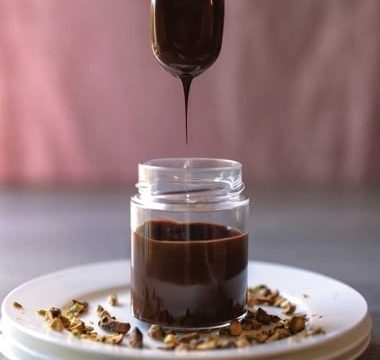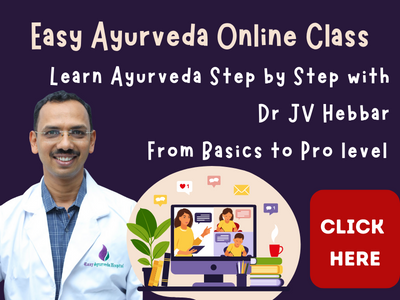The 13th chapter of Cikitsasthanam of Ashtanga Hridayam is named as Vidradhi Vrddhi cikitsitam Adhyayah. This chapter deals with the explanation of ‘treatment of abscess and enlargement of scrotum’.
The topics covered in this chapter include –
• Sodhana – purifactory therapy
• Vataja Vidradhi Cikitsa
• Pittaja Vidradhi Cikitsa
• Kaphaja Vidradhi Cikitsa
• Abhyantara Vidradhi Cikitsa
• Trayantyadi Kwatha
• Trayamanadi Ghrta
• Draksadi Ghrta
• Raktamoksana – bloodletting
• Treating ripened and unripe abscess located in the abdomen
• Treatment of ripe abscess
• Purification with medicated ghee
• Use of Guggulu
• Definition of Vidradhi
• Treatment of Vidradhi in diabetics
• Stana Vidradhi Cikitsa
• Vrddhi Cikitsa – treatment of enlargement of the scrotum
• Vataja Vrddhi Cikitsa
• Pittaja and Raktaja Vrddhi Cikitsa
• Kaphaja Vrddhi Cikitsa
• Medoja Vrddhi Cikitsa – Scrotal enlargement due to accumulation of fat
• Mutraja Vrddhi Cikitsa
• Antraja Vrddhi Cikitsa
• Sukumara Ghrta
• Agnikarma – thermal cautery
Pledge by the author(s)
अथातो विद्रधिवृद्धिचिकित्सितं व्याख्यास्याम: व्याख्यास्याम: ।
इति ह स्माहुरात्रेयादयो महर्षय: ।
After having offered prayers to the God, henceforth we are going to explain the chapter pertaining to the explanation of ‘treatment of abscess and enlargement of scrotum’. Thus say (pledge) Atreya and other sages.
Shodhana: Purifactory therapy
विद्रधिं सर्वमेवामं शोफवत्समुपाचरेत् ।
प्रततं च हरेद्रक्तं पक्वे तु व्रणवत्क्रिया ॥ १ ॥
All types of abscesses which are unripe should be treated similar to sopha; Blood-letting being done repeatedly; when these become ripetreatment should be similar to an ulcer.
Vataja Vidradhi Chikitsa
पञ्चमूलजलैर्धौतं वातिकं लवणोत्तरैः ।
भद्रादिवर्गयष्ट्याह्वतिलैरालेपयेद्व्रणम् ॥ २ ॥
वैरेचनिकयुक्तेन त्रैवृतेन विशोध्य च ।
विदारीवर्गसिद्धेन त्रैवृतेनैव रोपयेत् ॥ ३ ॥
The vidradhi (abscess) of vata origin should be washed with the decoction of pancamula and a paste of herbs of bhadra daru varga (chapter 15 of sutrasthana), yaṣṭyāhva – Glycyrrhiza glabra, tila – and Sesamum indicum added with more of lavana (salt) should be applied over it. Ulcer should be purified (cleansed of pus) by using trivrt sneha (mixture of three fats), boiled with herbs of virechana gana (vide chapter 15 of sutrasthana) and made to heal by trivrt Sneha itself boiled with herbs of vidari varga/ vidaryadi gana (chapter 15 ofsutrasthana).
Pittaja Vidradhi Chikitsa
क्षालितं क्षीरितोयेन लिम्पेद्यष्ट्यमृतातिलैः ।
पैत्तं घृतेन सिद्धेन मञ्जिष्ठोशीरपद्मकैः ॥ ४ ॥
पयस्याद्विनिशाश्रेष्ठायष्टीदुग्धैश्च रोपयेत् ।
न्यग्रोधादिप्रवालत्वक्फलैर्वा
The abscess of pitta origin should be washed with decoction of bark of trees having milky sap, applied over with the paste of yaṣṭi – Glycyrrhiza glabra, amṛtā – Tinospora cordifolia, and tila – Sesamum indicum. It should be made to heal with the use of ghee boiled with mañjiṣṭhā – Rubia cordifolia, uśīra – Vetiveria zizanioides, padmaka – Prunus cerasoides, payasyā – Lilium polyphyllum, dvi niśā – Curcuma longa and Berberis aristata, śreṣṭhā – Aquilaria agallocha, yaṣṭī – Glycyrrhiza glabra and milk or with tender sprouts, bark and fruits of nyagrodha etc. (nyagrodhadi gana, vide chapter 15 of sutrasthana)
Kaphaja Vidradhi Chikitsa
कफजं पुनः ॥ ५ ॥
आरग्वधादिना धौतं सक्तुकुम्भनिशातिलैः ।
लिम्पेत्कुलत्थिकादन्ती त्रिवृच्छ्यामाग्नितिल्वकैः॥६॥
ससैन्धवैः सगोमूत्रैस्तैलं कुर्वीत रोपणम् ।
The abscess of kapha origin should be washed with decoction of herbs of aragvadhadi gana (chapter 15 of sutrasthana), applied with the paste of corn flour, kumbha – Careya arborea, niśā – Curcuma longa, and tila – Sesamum indicum, healed with the use of oil prepared with decoction of kulattha – Dolichos biflorus, dantī – Baliospermum montanum, trivṛt – Operculina turpethum, śyāmā – Ipomoea turpethum, agni – Plumbago zeylanica, tilvaka – and Symplocos racemosa, added with rock salt and cow’s urine.
Kaphaja Vidradhi Chikitsa
रक्तागन्तूद्भवे कार्या पित्तविद्रधिवत्क्रिया ॥ ७ ॥
Treatment of abscesses arising from (vitiation of) blood and external causes is similar to that of abscess of pitta origin.
Abhyantara Vidradhi Chikitsa
वरुणादिगणक्वाथमपक्वेऽभ्यन्तरोत्थिते ।
ऊषकादिप्रतीवापं पूर्वाह्णे विद्रधौ पिबेत् ॥ ८ ॥
When the internal abscess is in the unripe stage, decoction of herbs of varunadi gana (chapter 15 of sutrasthana) mixed with powder of herbs of usakadi gana (chapter 15 of sutrasrhana) should be consumed in the forenoon.
Abhyantara Vidradhi Chikitsa
घृतं विरेचनद्रव्यैः सिद्धं ताभ्यां च पाययेत् ।
निरूहं स्नेहवस्तिं च ताभ्यामेव प्रकल्पयेत् ॥ ९ ॥
Medicated ghee prepared with herbs of purgative group and the two groups mentioned above should be consumed. Decoction enema and oleation enema also should be prepared from these herbs only.
पानभोजनलेपेषु मधुशिग्रुः प्रयोजितः ।
दत्तावापो यथादोषमपक्वं हन्ति विद्रधिम् ॥ १० ॥
Decoction of madhuśigruḥ – Moringa oleifera added with paste (of the herbs mentioned above), appropriate to the dosha aggravated, drink, food and for external application, destroy the unripe abscess (cures without leading to suppuration).
Trayantyadi Kwatha
त्रायन्तीत्रिफलानिम्बकटुकामधुकं समम् ।
त्रिवृत्पटोलमूलाभ्यां चत्वारोंऽशाः पृथक् पृथक् ॥ ११ ॥
मसूरान्निस्तुषादष्टौ तत्क्वाथः सघृतो जयेत् ।
विद्रधिगुल्मवीसर्पदाहमोहमदज्वरान् ॥ १२ ॥
तृण्मूर्छाछर्दिहृद्रोगपित्तासृक्कुष्ठकामलाः ।
Equal parts of trāyantī – Gentiana kurroo, triphalā – Terminalia chebula, Terminalia bellirica and Emblica officinalis, nimba – Azadirachta indica, kaṭukā – Picrorhiza Kurroa, madhuka – and Glycyrrhiza glabra (all together one part), four parts of trivṛt – Operculina turpethum and roots of paṭola – Trichosanthes dioica each separately, eight parts of masūra – Lens culinaris should be de-husked and made into decoction, mixed with ghee and consumed cures vidradhi – abscess, gulma – abdominal tumor, vīsarpa – herpes, dāha – burning sensation, moha – unconsciousness, mada – toxicity, jvara – fever, tṛṭ – thirst, mūrchā – fainting, chardi – vomiting, hṛdroga – heart disease, pittāsṛk – bleeding disease, kuṣṭha – skin diseases, kāmalā – and jaundice.
Trayamanadi Ghrita
कुडवं त्रायमाणायाः साध्यमष्टगुणेऽम्भसि ॥ १३ ॥
कुडवं तद्रसाद्धात्रीस्वरसात्क्षीरतो घृतात् ।
कर्षांशं कल्कितं तिक्तात्रायन्तीधन्वयासकम् ॥१४॥
192 grams of trāyamāṇa – Gentiana kurroo is boiled in eight times of water and decoction reduced to quarter, to this, are added, 192 ml each of its juice (of trayamana – Gentiana kurroo)dhātrī svarasāt – and juice of Emblica officinalis, milk, ghee and paste of karṣāṃśaṃ – one karsa (12 grams) each of tiktā – Swertia chirata, trāyantī – Gentiana kurroo dhanvayāsaka – Alhagi camelorum, mustā – Cyperus rotundus, tāmalakī – Phyllanthus niruri, vīrā – Vetiveria zizanioides, jīvantī – Leptadenia reticulata, candana – Santalum album, utpalam – Nymphaea stellata and medicated ghee prepared by combining all these together. This ghee also possesses qualities of the earlier formula.
Drakshadi Ghrita
द्राक्षा मधूकं खर्जूरं विदारी सशतावरी ।
परूषकाणि त्रिफला तत्क्वाथे पाचयेद्घृतम्॥१६॥
क्षीरेक्षुधात्रीनिर्यासप्राणदाकल्कसंयुतम् ।
तच्छीतं शर्कराक्षौद्रपादिकं पूर्ववद्गुणैः ॥ १७ ॥
Medicated ghee is prepared with the decoction of drākṣā – Vitis vinifera, madhūkaṃ – Madhuca longifolia, kharjūraṃ – Phoenix dactylifera, vidārī – Pueraria tuberosa, śatāvarī – Asparagus racemosu, parūṣakāṇi – Grewia asiatica, triphalā – Terminalia chebula, Terminalia belliricaand Emblica officinalis, kṣīra – milk, juice of ikṣu – Saccharum officinarum juice of dhātrī – Emblica officinalis and paste of prāṇadā – Terminalia chebula. When it gets cooled, sugar and honey, one fourth the quantity of the preparation is added. This formula also possesses similar properties.
Raktamokshana: Blood letting
हरेच्छृङ्गादिभिरसृक् सिरया वा यथान्तिकम् ।
Blood-letting should be done by using a srnga (sucking horn) etc. or by cutting the vein which is nearest to the site of disease manifestation.
Treating ripened and unripe abscess located in the abdomen
विद्रधिं पच्यमानं च कोष्ठस्थं बहिरुन्नतम् ॥१८॥
ज्ञात्वोपनाहयेत् शूले स्थिते तत्रैव पिण्डिते ।
तत्पार्श्वपीडनात् सुप्तौ दाहादिष्वल्पकेषु च ॥१९॥
पक्वः स्याद्विद्रधिं भित्त्वा व्रणवत्तमुपाचरेत् ।
अन्तर्भागस्य चाप्येतच्चिह्नं पक्वस्य विद्रधे: ॥२०॥
The abscess which is situated in the abdomen understanding ripening, and found bulging outwards should be given a warm poultice and tied. When the pain subsides and the mass gets rounded, it becomes painless when pressed from the sides, and burning sensation etc. symptoms become mild. When the abscess ripens, it should be cut (incised) and treated as an ulcer. These are the features of an internal abscess which is ripe.
Treatment of ripe abscess
पक्वः स्रोतांसि सम्पूर्य स यात्यूर्ध्वमधोऽथवा ।
स्वयम्प्रवृत्तं तं दोषमुपेक्षेत हिताशिनः ॥ २१ ॥
दशाहं द्वादशाहं वा रक्षन् भिषगुपद्रवात् ।
असम्यग्वहति क्लेदे वरुणादिं सुखाम्भसा॥२२॥
पाययेन्मधुशिग्रुं वा यवागूं तेन वा कृताम् ।
यवकोलकुलत्थोत्थयूषैरन्नं च शस्यते ॥ २३ ॥
When the ripened abscess fills channels with materials (like pus etc.) and they come out of body on their own accord, either in upward or downward directions, it should be neglected (not stopped) by the person who desires good for the patient, for a period of ten days or twelve days, protecting the patient all the time from the complication/ secondary diseases. If the discharge is not flowing out satisfactory, he should be given the (powder of herbs of) varunadi gana (chapter 15 of sutrasthana) with comfortable warm water or drink thin gruel prepared from Moringa oleifera. He should consume his food (cooked rice) along with the soup yava – of Hordeum vulgare, kola – Ziziphus jujube, or kulattha – Dolichos biflorus.
Purification with medicated ghee
ऊर्ध्वं दशाहात्त्रायन्तीसर्पिषा तैल्वकेन वा ।
शोधयेद्बलतः शुद्धः सक्षौद्रं तिक्तकं पिबेत् ॥ २४ ॥
After ten days, he should be purified (with purgations) using either trayantyadi ghrta (mentioned earlier) or tilvaka ghrita (vide verses 152-153 of chapter 3 of cikitsita sthana), considering his strength. After purification, he should consume tiktaka ghrta (verses 2-7 of chapter 19 of cikitsita sthana), mixed with honey.
Use of Guggulu
सर्वशो गुल्मवच्चैनं यथादोषमुपाचरेत् ।
सर्वावस्थासु सर्वासु गुग्गुलुं विद्रधीषु च ॥ २५ ॥
कषायैर्यौगिकैर्युञ्ज्यात् स्वैः स्वैस्तद्वच्छिलाजतु ।
This (internal abscess) should be treated like gulma (abdominal tumor) in all the ways according to involved doshas, in all types of vidardhi (abscess) and in all their different stages, guggulu – Commiphora mukul should be administered with appropriate decoctions (suitable to the aggravated doshas), Asphaltum punjabinum can also be used similarly.
Definition of Vidradhi
पाकं च वारयेद्यत्नात्सिद्धिः पक्वे हि दैविकी ॥२६॥
अपि चाशु विदाहित्वाद्विद्रधिः सोऽभिधीयते ।
Suppuration (of the abscess) should be prevented by all efforts, once it becomes ripe, success in treatment is providential because it produces quick suppuration, it is called as Vidradhi.
Treatment of Vidradhi in diabetics
सति चालोचयेन्मेहे प्रमेहाणां चिकित्सितम् ॥२७॥
If it (abscess) manifests in patients of diabetes, the treatments mentioned so far should be considered along with treatments of diabetes.
Stana Vidradhi Chikitsa
स्तनजे व्रणवत्सर्वं न त्वेनमुपनाहयेत् ।
पाटयेत्पालयन् स्तन्यवाहिनीः कृष्णचूचुकौ ॥२८॥
सर्वास्वामाद्यवस्थासु निर्दुहीत च तत् स्तनम् ।
अथ वृद्दिचिकित्सितम्
Abscess of the breast should be treated like an ulcer but without applying warm poultices over it. It should be incised avoiding injury to the milk ducts, the black areola and nipple. All the stages commencing with the unripe, the affected breast should be drained of its milk. Thus ends the treatment of abscesses.
Vriddhi Chikitsa: Treatment of enlargement of the scrotum
Vataja Vriddhi Chikitsa
शोधयेत्त्रिवृता स्निग्धं वृद्धौ स्नेहैश्चलात्मके ॥ २९ ॥
कौशाम्रतिल्वकैरण्डसुकुमारकमिश्रकैः ।
ततोऽनिलघ्ननिर्यूहकल्कस्नेहैर्निरूहयेत् ॥ ३० ॥
रसेन भोजितं यष्टितैलेनान्वासयेदनु ।
स्वेदप्रलेपा वातघ्नाः पक्वे भित्त्वा व्रणक्रियाम् ॥ ३१ ॥
In enlargement of the scrotum arising from cala (vata), the patient should be given oleation therapy with fat prepared with Operculina turpethum followed by purifactory therapy using either the oil processed with Schleichera oleosa, tilvaka – Symplocos racemosa, eraṇḍa – Ricinus communis, sukumaraka taila (described later in verse 41-46) or misraka sneha (described later in verse 89-90 of chapter 14 of cikistsita sthana). Next, decoction enema administered using vata mitigating decoctions, paste and fats and made to take food along with meat soup. Next, lubricating enema should be administered using yasti taila (oil of Glycyrrhiza glabra), fomentation and application of pastes which mitigate vata should be done next. When it becomes ripe, it should be cut (incised or punctured) and then treated as an ulcer.
Pittaja and Raktaja Vriddhi Chikitsa
पित्तरक्तोद्भवे वृद्धावामपक्वे यथायथम् ।
शोफव्रणक्रियां कुर्यात्प्रततं च हरेदसृक् ॥ ३२ ॥
Vrddhi arising from pitta and raktha, should be treated in their unripe and ripe stages just as treating an inflammatory swelling and an ulcer respectively. Blood should be let out frequently.
Kaphaja Vriddhi Chikitsa
गोमूत्रेण पिबेत्कल्कं श्लैष्मिके पीतदारुजम् ।
विम्लापनाद्ऋते चास्य श्लेष्मग्रन्थिक्रमो हितः॥३३॥ पक्वे च
पाटिते तैलमीष्यते व्रणशोधनम् ।
सुमनोऽरुष्कराङ्कोल्लसप्तपर्णेषु साधितम् ॥ ३४ ॥
पटोलनिम्बरजनीविडङ्गकुटजेषु च ।
In vrddhi arising from kapha, paste of pītadāru – Berberis aristate mixed with cow urine should be consumed. All the methods of treatments except vimlapana (kneading by hand) indicated for slesmagranthi (tumor of kapha origin) are beneficial. After it ripens and bursts use of medicated oil which cleanses the ulcer, prepared with sumana – Mesua ferrea, aruṣkara – Semecarpus anacardium, aṅkolla – Alangium salvifolium, saptaparṇa – Alstonia scholaris, paṭola – Trichosanthes dioica, nimba – Azadirachta indica, rajanī – Curcuma longa, viḍaṅga – Embelia ribes and kuṭaja – Holarrhena antidysenterica is desirable.
Medoja Vriddhi Chikitsa: Scrotal enlargement due to accumulation of fat
मेदोजं मूत्रपिष्टेन सुस्विन्नं सुरसादिना ॥ ३५ ॥
शिरोविरेकद्रव्यैर्वा वर्जयन् फलसेवनीम् ।
दारयेद्वृद्धिपत्रेण सम्यङ्मेदसि सूद्धृते ॥ ३६ ॥
व्रणं माक्षिककासीससैन्धवप्रतिसारितम् ।
सीव्येदभ्यञ्जनं चास्य योज्यं मेदोविशुद्धये ॥ ३७ ॥
मनःशिलैलासुमनोग्रन्थिभल्लातकैः कृतम् ।
तैलमाव्रणसन्धानात् स्नेहस्वेदौ च शीलयेत्॥३८॥
In vrddhi arising from medas (fat), the scrotum should be given fomentation (till perspiration appears) with herbs of either surasadi gana or herbs for Nasya (chapter 15 of sutrasthana), macerated with cows urine; Next, avoiding the scrotal raphae, the scrotum should be incised with the vrddhipatra (lancet) till the fat is removed out completely. The ulcer should be covered with paste of – honey, green vitriol, and rock salt. After removing it and suturing, it should be anointed with oil prepared with realgar, elā – Elettaria cardamomum, sumana – Mesua ferrea, granthi – Root of Piper longum, bhallātaka – Semecarpus anacardium should be arranged for cleansing the morbid fat till the ulcer heels, anointing it with oil and fomentation should be done.
Mutraja Vriddhi Chikitsa
मूत्रजं स्वेदितं स्निग्धैर्वस्त्रपट्टेन वेष्टितम् ।
विध्येदधस्तात् सेवन्याः स्रावयेच्च यथोदरम्॥३९॥
व्रणं च स्थगिकाबद्धं रोपयेदन्त्रहेतुके ।
Mutraja vrddhi (scrotal enlargement due to accumulation of urine/ fluid/ hydrocele) should be given fomentation, wrapped with cloth, soaked in oil, punctured below, near the suture (raphea) with the help of a vrihimukha sastra (trocar and canula) and the fluid drained out just similar to udara (enlargement of the abdomen due to accumulation of fluid described in chapter 15). The wound should be tied with sthagika bandha (a type of bandage vide chapter 29 of sutrasthana) and made to heal.
Antraja Vriddhi Chikitsa
अन्त्रहेतुके।
फलकोशमसम्प्राप्ते चिकित्सा वातवृद्धिवत् ॥४०॥
For antra vrddhi (scrotal enlargement due to descent of the small intestine/ scrotal hernia) when the intestine has not descended into the scrotum, treatment is similar to that of vatavrddhi (scrotal enlargement arising from vata).
Sukumara Ghrita
पचेत्पुनर्नवतुलां तथा दशपलाः पृथक् ।
दशमूलपयस्याश्वगन्धैरण्डशतावरीः ॥ ४१ ॥
द्विदर्भशरकाशेक्षुमूलपोटगलान्विताः ।
वहेऽपामष्टभागस्थे तत्र त्रिंशत्पलं गुडात् ॥ ४२ ॥
प्रस्थमेरण्डतैलस्य द्वौ घृतात्पयसस्तथा ।
आवपेद्द्विपलांशं च कृष्णातन्मूलसैन्धवम् ॥ ४३ ॥
यष्टीमधुकमृद्वीकायवानीनागराणि च ।
तत्सिद्धं सुकुमाराख्यं सुकुमारं रसायनम् ॥ ४४ ॥
वातातपाध्वयानादिपरिहार्येष्वयन्त्रणम् ।
प्रयोज्यं सुकुमाराणामीश्वराणां सुखात्मनाम् ॥ ४५ ॥
नृणां स्त्रीवृन्दभर्तॄणामलक्ष्मीकलिनाशनम् ।
सर्वकालोपयोगेन कान्तिलावण्यपुष्टिदम् ॥ ४६ ॥
वर्ध्मविद्रधिगुल्मार्शोयोनिमेढ्रानिलार्तिषु ।
शोफोदरखुडप्लीहविड्विबन्धेषु चोत्तमम् ॥ ४७ ॥
One tula (4.8 Kg) of punarnava – Boerhavia diffusa, ten pala (480 grams) each of group of ten roots, payasya – Ipomoea digitata, aśvagandha – Withania somnifera, eraṇḍa – Ricinus communis, śatāvarīḥ – Asparagus racemosus, dvidarbha – roots of the two darbha (Desmostachya bipinnata), śara – Saccharum munja, kāśa – Saccharum spontaneum, ikṣu mūla – Saccharum officinarum, poṭagala – and Typha elephantina, are boiled in one vaha (one drona – 12 litres 228 ml) of water and decoction reduced to one- eight part and filtered. To this are added thirty pala (1 Kg 440 grams) of molasses one prastha (768 ml) of castor oil, two prastha (1536 grams) each of ghrta (1536 ml of) milk and mixed with paste of two pala (96 grams) each of kṛṣṇā – Piper longum, root of Piper longum, rock salt, yaṣṭīmadhuka – Glycyrrhiza glabra, mṛdvīkā – Vitis vinifera, yavānī – Trachyspermum ammi, and nāgara – Zingiber officinale. Ghee is prepared. This formula known as sukumara rasayanam, is a rejuvenator for persons of tender constitution, possesses unlimited power in relieving the effects of wind, sunlight, long walk, riding on vehicles etc. suitable for administration to those who are of tender physique, wealthy, and desirous of comfort; husbands who are surrounded by groups of women, it wards off inauspiciousness and dispels sorcery, furnishes good complexion, beauty and nourishment; By continuous use always it is the best medicine for scrotal enlargement, abscess, abdominal tumor, hemorrhoids, disorder of vagina and penis, diseases of anila (vata), dropsy, enlargement of the abdomen, vatarakta/ gout, diseases of the spleen and intestinal obstruction from feces.
Agnikarma: Thermal cautery
यायाद्वर्ध्म न चेच्छान्तिं स्नेहरेकानुवासनैः ।
वस्तिकर्म पुरः कृत्वा वङ्क्षणस्थं ततो दहेत्॥४८॥
अग्निना मार्गरोधार्थं मरुतोऽर्धेन्दुवक्रया ।
If the inguinal hernia does not subside by oleation, purgation and lubrication enema therapies; basti (decoction enema) should be administered first and then the mass in the groin should be branded with fire (cauterized) in order to clear the passage of maruta (vata).
Agnikarma: Thermal cautery
अर्धेन्दुवक्रया।
अङ्गुष्ठस्योपरि स्नाव पीतं तन्तुसमं च यत् ॥ ४९ ॥
उत्क्षिप्य सूच्या तत्तिर्यग्दहेच्छित्त्वा यतो गदः ।
ततोऽन्यपार्श्वेऽन्ये त्वाहुर्दहेद्वाऽनामिकाङ्गुलेः ॥ ५० ॥
गुल्मेऽन्यैर्वातकफजे प्लीह्नि चायं विधिः स्मृतः ।
कनिष्ठिकानामिकयोर्विश्वाच्यां च यतो गदः ॥ ५१ ॥
The yellow tendon resembling a thread, situated over the thumb should be raised up and cut as per disease, (its surrounding structures), and then branded (with the fire) using a needle curved like the half-moon (which is made red hot) selecting the thumb of the opposite side. Others (authorities) say that branding should be done over the tendon above the ring finger some others say, that the same procedure should be done in Gulma (abdominal tumor) of vata kapha origin and enlargement of spleen. In visvaci (pain and rigidity of the arm/ shoulder-arm syndrome) branding should be done between the little finger and ring fingers of the same side (of the affected arm).
इति श्री वैद्यपति सिंहगुप्तसूनु श्रीमद्वाग्भटविरचितायामष्टाङ्गहृदयसंहितायां चतुर्थे चिकित्सितस्थाने विद्रधिवृद्धिचिकित्सितं नाम त्रयोदशोऽध्याय: ॥१३॥
Thus, ends the chapter, vidradhi-vrddhi cikitsita – the thirteenth in cikitsita sthana of Astangahrdaya Samhita, composed by Srimad Vagbhata, son of Sri Vaidyapati Simhagupta.















